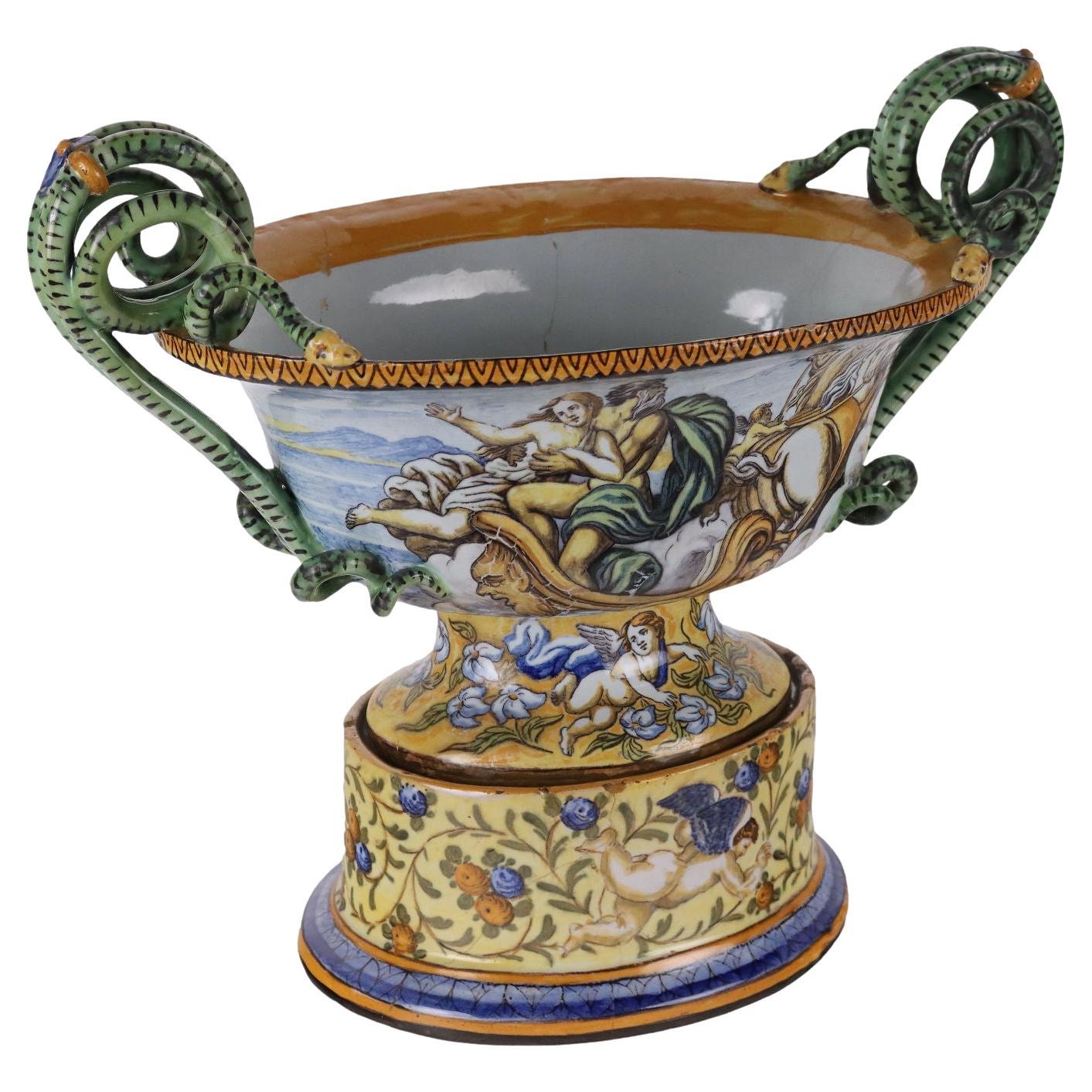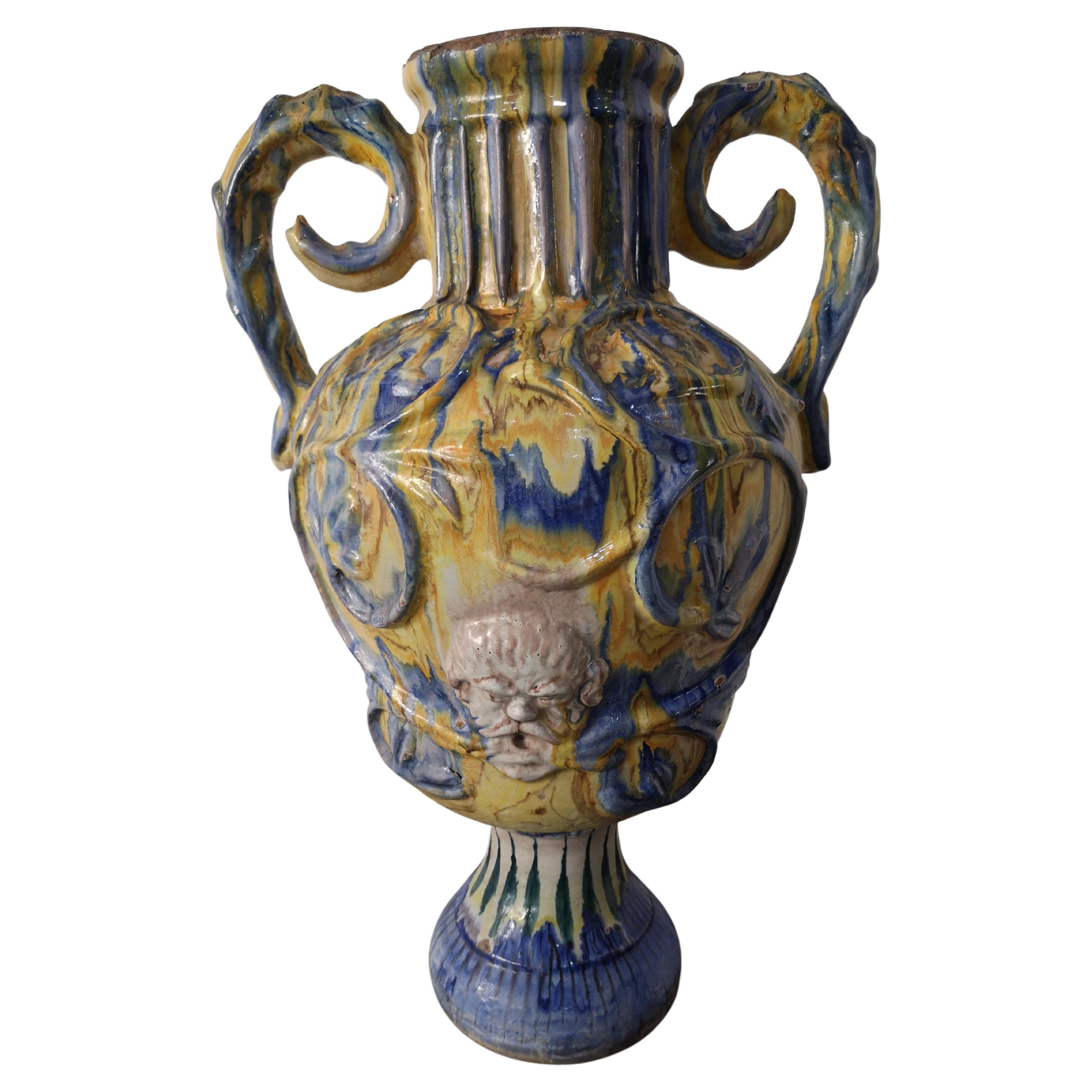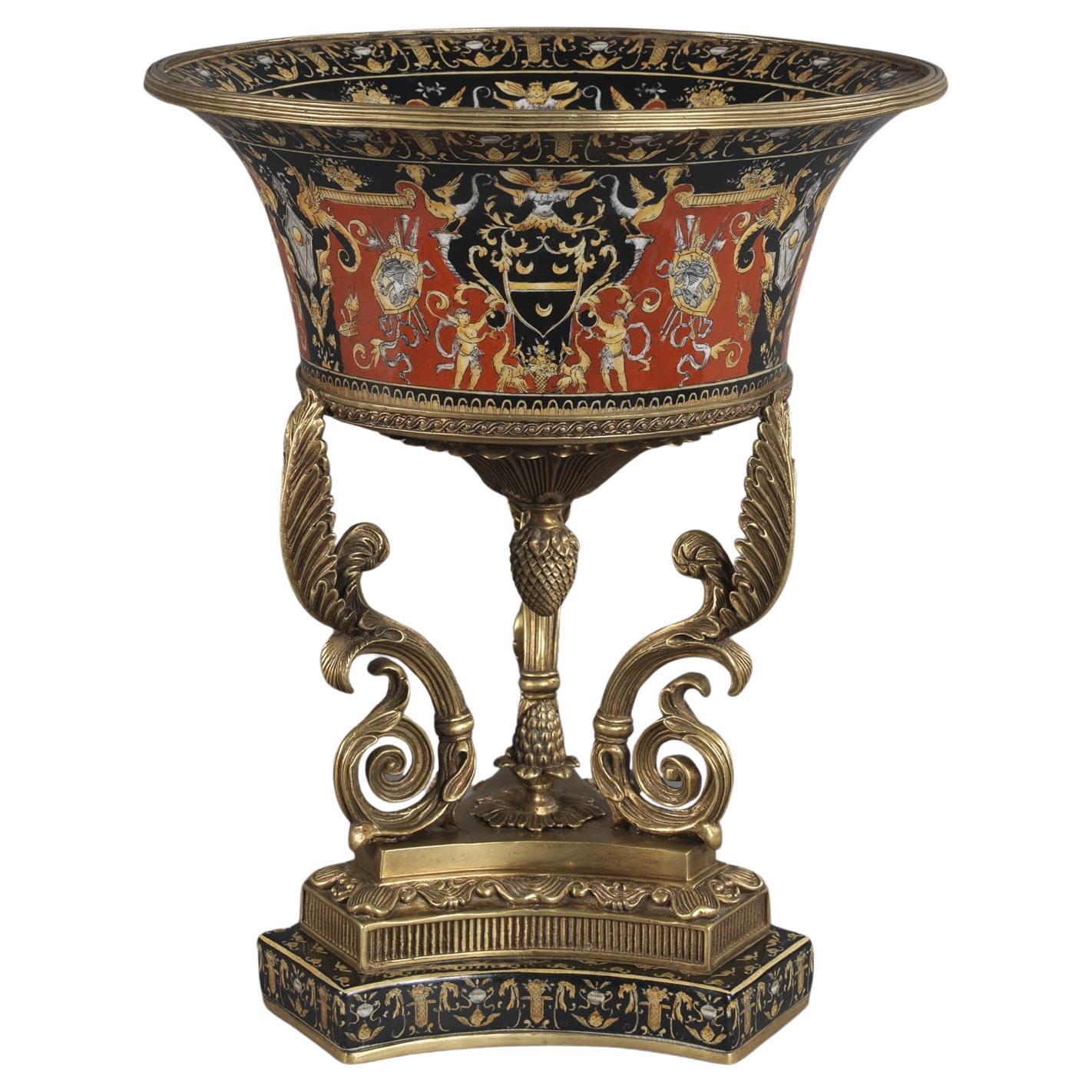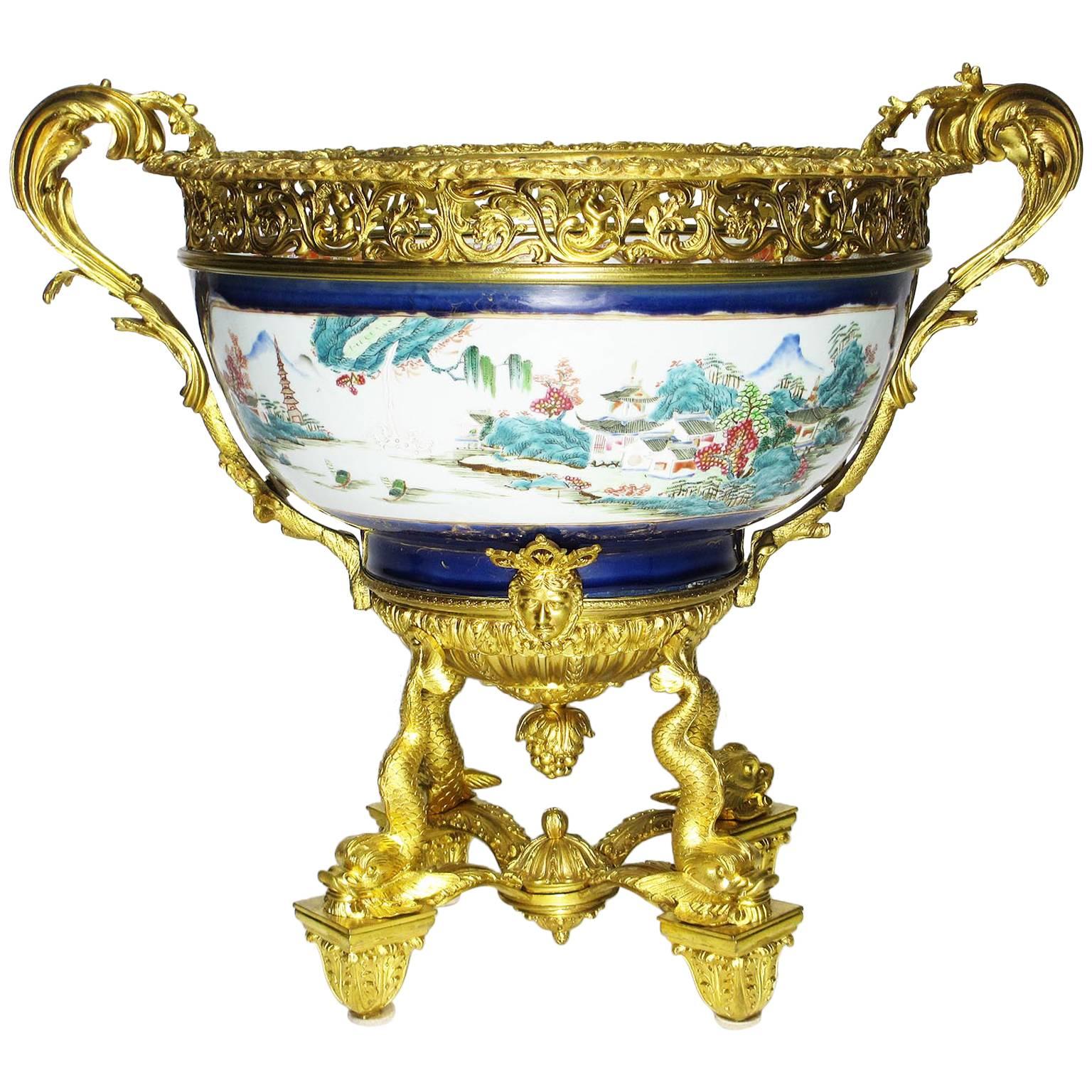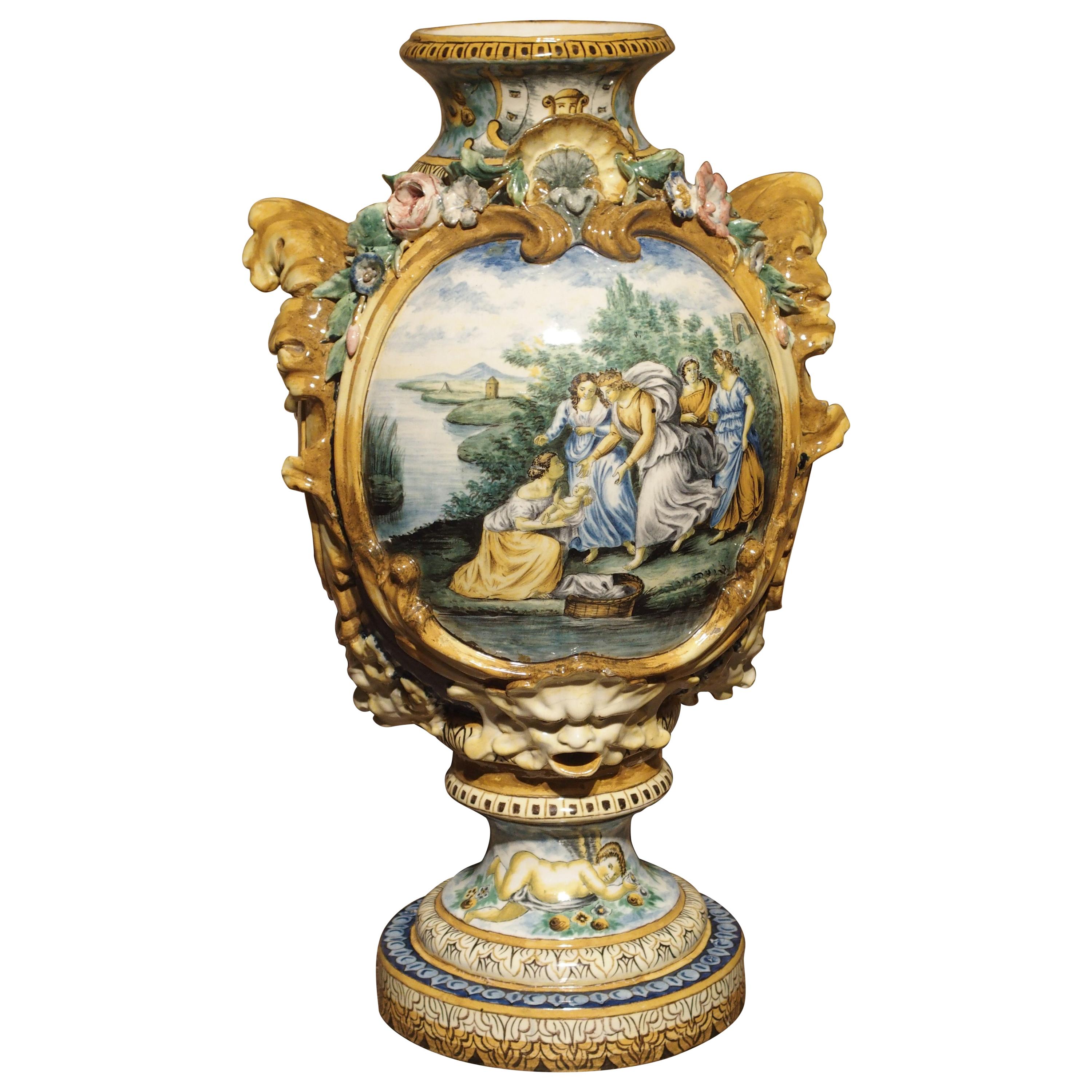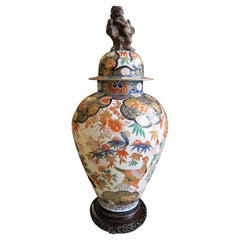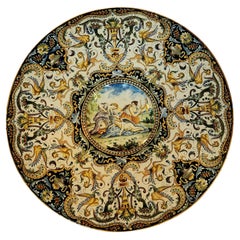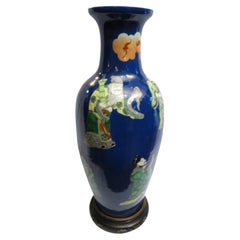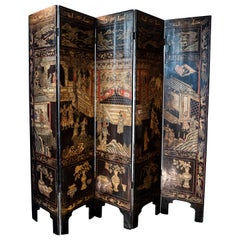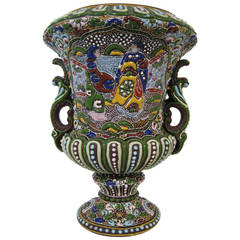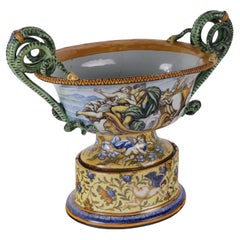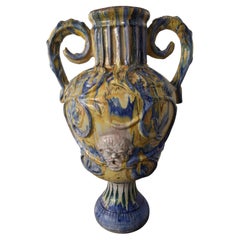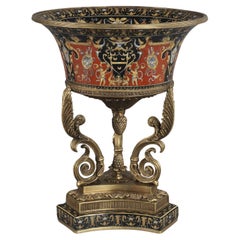Items Similar to Antique Ceramics from the Giustiniani Family Collection by Angelo
Want more images or videos?
Request additional images or videos from the seller
1 of 21
Antique Ceramics from the Giustiniani Family Collection by Angelo
$7,000
£5,311.44
€6,073.16
CA$9,777.10
A$10,870.81
CHF 5,676.14
MX$132,324.19
NOK 72,425.02
SEK 67,858.78
DKK 45,325.08
Shipping
Retrieving quote...The 1stDibs Promise:
Authenticity Guarantee,
Money-Back Guarantee,
24-Hour Cancellation
About the Item
The Giustiniani family was one of the most important in ceramic production in Naples, particularly from the 17th to the 19th century. The Giustiniani manufactory is famous for its "riggiole" (decorative tiles), which included archeological themes and historical reproductions, such as the famous "Alexander Mosaic." After being a successful manufactory, Giustiniani was acquired by the Stingo family in the 19th century, who continued to expand the company and keep the ceramic tradition alive. The Giustiniani family also extended its activities to Cerreto Sannita, another important ceramics production center in Campania. Several family members, such as Antonio Giustiniani, worked to create pieces that are now considered valuable works of art.
This vase is from Angelo Giustiniani, he was the son of Nicola Giustiniani, one of the key figures in this family of ceramists. He is the youngest of Nicola's seven children. Angelo later became a ceramic painter, and he was given the nickname "Angelo di Napoli" to distinguish him from another Angelo, who was the son of Paolo Giustiniani. The nickname helps to clarify the difference between the two individuals within the larger Giustiniani family, which had multiple generations involved in the ceramic arts.
Angelo's contributions are significant within the context of the family's legacy in the world of Neapolitan ceramics, continuing the tradition of artistry that his father Nicola had established.
The letters SPQR seen on the vase stand for "Senatus Populusque Romanus," which translates to "The Senate and the People of Rome." This phrase was a symbol of the Roman Republic and later the Roman Empire, representing the collective authority of the Senate (the governing body) and the Roman citizens (the people). It emphasized the unity and shared governance of Rome between the political elite (the Senate) and the general population. The acronym was used in various official documents, inscriptions, and monuments, and it remains a symbol of Rome and its historical significance.
A rare opportunity to acquire exquisite pieces from the renowned Giustiniani family, celebrated for their craftsmanship in Neapolitan ceramics. These hand-painted masterpieces trace the legacy of Antonio, Nicola, and their descendants, including Angelo di Napoli, a distinguished ceramic artist in his own right. Whether you're a collector or an art enthusiast, these exceptional pieces embody centuries of tradition and artistry. Don't miss out on owning a piece of history.
Vase signed "Angelo Giustiniani Napoli 1881".
- Dimensions:Height: 27.56 in (70 cm)Diameter: 39.38 in (100 cm)
- Materials and Techniques:
- Place of Origin:
- Period:
- Date of Manufacture:1881
- Condition:Repaired: The inside had a split and it was enhanced in general. Wear consistent with age and use. Minor fading.
- Seller Location:CABA, AR
- Reference Number:1stDibs: LU5634242137242
About the Seller
5.0
Vetted Professional Seller
Every seller passes strict standards for authenticity and reliability
Established in 1990
1stDibs seller since 2021
15 sales on 1stDibs
Typical response time: 1 hour
- ShippingRetrieving quote...Shipping from: CABA, Argentina
- Return Policy
Authenticity Guarantee
In the unlikely event there’s an issue with an item’s authenticity, contact us within 1 year for a full refund. DetailsMoney-Back Guarantee
If your item is not as described, is damaged in transit, or does not arrive, contact us within 7 days for a full refund. Details24-Hour Cancellation
You have a 24-hour grace period in which to reconsider your purchase, with no questions asked.Vetted Professional Sellers
Our world-class sellers must adhere to strict standards for service and quality, maintaining the integrity of our listings.Price-Match Guarantee
If you find that a seller listed the same item for a lower price elsewhere, we’ll match it.Trusted Global Delivery
Our best-in-class carrier network provides specialized shipping options worldwide, including custom delivery.More From This Seller
View All19th Century Japanese Imari Vase
By Imari Porcelain
Located in CABA, AR
Introducing a remarkable Japanese 19th-century lidded Imari vase, a true testament to the artistry and craftsmanship of the Edo period. This exquisite piece features a stunning dog o...
Category
Antique Late 19th Century Japanese Porcelain
Materials
Porcelain
$6,000 Sale Price
25% Off
A Large Italian Maiolica Charger, 19th Century
Located in CABA, AR
Maiolica chargers are large, decorative ceramic plates that are part of the broader tradition of Maiolica pottery, a type of tin-glazed earthenware produced in Italy since the Renais...
Category
Antique 19th Century Italian Renaissance Revival Ceramics
Materials
Ceramic
$4,800 Sale Price
20% Off
Chinese Cobalt Ground Polychrome Enameled Porcelain Vase, 19th Century
Located in CABA, AR
Introducing a captivating Chinese cobalt ground porcelain vase from the mid to late 19th century, adorned with exquisite polychrome enameled decoration depicting the 'Eight Daoist Im...
Category
Antique 19th Century Chinese Porcelain
Materials
Enamel
$6,300 Sale Price
30% Off
18th Century Five-Panel Chinese Coromandel Screel
Located in CABA, AR
Transport yourself back to the opulent splendor of the 18th century with this magnificent Chinese five-panel black Coromandel screen, a true m...
Category
Antique 18th Century Chinese Chinese Export Paintings and Screens
Materials
Gold Leaf
$10,500 Sale Price
30% Off
French Empire Bronze and Mahogany Marble Top Table
Located in CABA, AR
This exquisite French Empire table, masterfully crafted from the finest mahogany and adorned with ornate bronze detailing, is a quintessential representation of the opulence and prec...
Category
Antique 19th Century French Furniture
Materials
Marble, Bronze
$5,200 Sale Price
20% Off
Chinese Lapislazuli Carving of "The Eight Daoist Inmortals", Mid 20th Century
Located in CABA, AR
Immerse yourself in the mystical world of Chinese mythology with this captivating mid-20th-century Lapis Lazuli carving depicting "The Eight Daoist Immortals." Each figure, intricate...
Category
Mid-20th Century Chinese More Asian Art, Objects and Furniture
Materials
Lapis Lazuli
$5,600 Sale Price
20% Off
You May Also Like
Moriage Nippon Vase, Japanese Porcelain
Located in Hamilton, Ontario
Beautiful Japanese Moriage vase, late 19th century-early 20th century.
Free shipping within the United States and Canada.
Category
Early 20th Century Japanese Vases
Materials
Porcelain
Crater Vase in Majolica Manufacture of Naples Italy Late 19th Century
By Non-Standard Furniture and Lighting
Located in Milano, IT
Large polychrome faience crater vase with serpentiform handles. Historiated decoration with mythological subject: "The Rape of Proserpine," there is also depicted the lake of Pergusa...
Category
Antique Late 19th Century Italian Other Vases
Materials
Maiolica
Caltagirone ceramic amphora, mid-19th century
Located in Catania, IT
Caltagirone ceramic amphora with satyr mask, mid-19th century.
Category
Antique Mid-19th Century Baroque Vases
Materials
Ceramic
A Renaissance Style Faïence Coupe in The manner of Gien
By Gien
Located in Brighton, West Sussex
A Fine Renaissance Style Faïence Coupe in The manner of Gien.
This impressive faïence coupe is of inverted bell shape with Renaissance style decoration of strapwork, mythical beasts, trophies and armorial...
Category
Antique 19th Century French Renaissance Centerpieces
Materials
Porcelain
Large 19th Century Chinese Porcelain and French Figural Ormolu Centerpiece
Located in Los Angeles, CA
A very fine and large 19th century Chinese porcelain and French figural ormolu-mounted Chinoiserie style centerpiece. The circular ovoid bowl, maybe 18th century Jiaqing period (unve...
Category
Antique 19th Century French Chinoiserie Planters, Cachepots and Jardinières
Materials
Ormolu
$23,250 Sale Price
51% Off
19th Century Italian Majolica Fountain Body/Vase
Located in Dallas, TX
This colorful antique Italian Majolica vase dates to the 1800s. This type of pottery was first produced during the Italian Renaissance, and it often depicted historical and mythologi...
Category
Antique 19th Century Italian Vases
Materials
Majolica
More Ways To Browse
Rare Ceramics
Antique Hand Painted Ceramics
Antique Italian Ceramics
19th Century Italian Ceramics
Collection Reproductions
Roman Furniture Company
Roman Tiles
Roman Inscription
Italian Hand Painted Tiles
Italian Tiles Antique
17th Century Tile
Asian Ceramic Tile
Mosaic Tile Antique
Napoli Ceramic
Neapolitan Figures
Antique Chinese Blue And White Bowl
Japanese Shoji
Chinese Export Blue Birds

